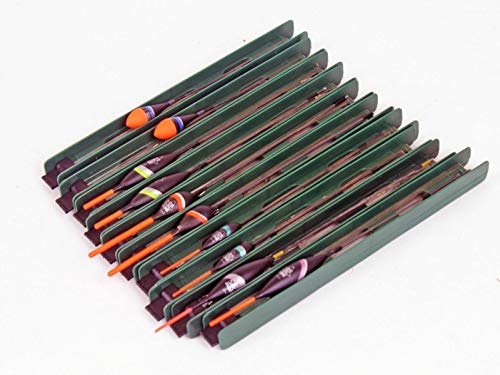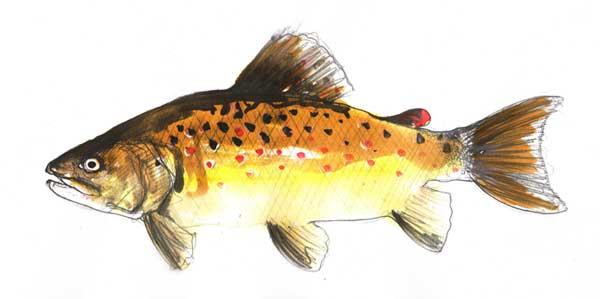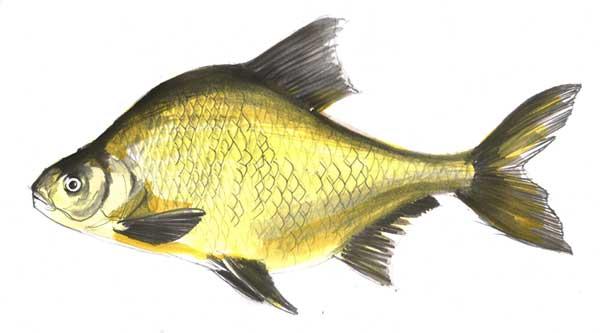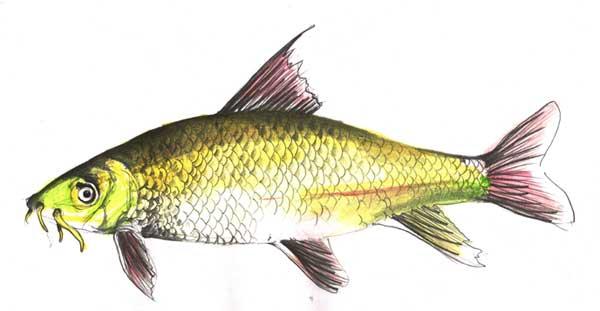Bleak fishing is a delightful way to spend a day by the water, especially for those looking to catch small fish for fun or bait. The bleak, a small freshwater fish, is known for its silvery appearance and playful bites. Understanding the basics of bleak fishing will enhance your chances of success and make the experience enjoyable.
First, it's essential to know where to find bleak. These fish typically inhabit slow-moving rivers, ponds, and lakes. Look for areas with plenty of cover, such as submerged plants or overhanging trees. They tend to swim in schools, so once you find one, there’s a good chance others are nearby. Keep an eye on the water's surface; if you spot small ripples or flashes, it may mean the bleak are feeding.
10 Pack Barbless Pole Float Fishing Rigs
Experience effortless angling with our 10 Pack Barbless Pole Float Fishing Rigs designed for optimal performance and fish-friendly practices
Product information
SGD 21.60
Product Review Score
4.6 out of 5 stars
105 reviewsProduct links
When it comes to gear, simplicity is key. A lightweight rod and reel combo is ideal for catching bleak. Using a small hook and light line will help you feel the gentle bites these fish provide. A small float can also increase your chances by allowing the bait to hover just above the fish. For bait, consider using tiny pieces of dough or maggots, which are often irresistible to bleak.
Discover a venue near you on Catch More Fish
Timing can significantly impact your success. Early morning or late afternoon are the best times to fish for bleak, as they’re more active during these cooler parts of the day. Be patient and take your time; watching the float bob and waiting for that unmistakable tug can be thrilling. With these basic tips in mind, you’re well on your way to mastering bleak fishing!
Essential Gear for Bleak Fishing
When gearing up for bleak fishing, having the right equipment can make all the difference in your success. The primary focus should be on lightweight gear that allows for quick casting and easy handling. A sensitive rod, typically 10 to 12 feet long, is ideal. This length provides the necessary reach to cast into open waters while maintaining control over your line.
A matching reel is essential, and opting for a small spinning reel is recommended. These reels are easy to use and allow for smooth line retrieval. When spooling your reel, go for a fine diameter line, such as 2 to 6-pound test monofilament. This thinner line will be less visible to the wary bleak and can help improve your catch rate.
In terms of terminal tackle, simplicity is key. Small hooks, around size 16 to 18, work well for bleak fishing. Most anglers prefer using micro jigs or small fly patterns that mimic the natural food sources of the bleak. Adding a lightweight float can also aid in detecting subtle bites and keeping your bait suspended at the right depth.
Don’t forget about your bait! While some anglers swear by miniature lures, live bait like maggots or small pieces of worm can attract more fish. A bait container or small tackle box to keep everything organized is a must. Finally, a reliable landing net will help you securely bring your catch ashore without injury, ensuring a smooth catch-and-release process if needed.
Best Techniques for Catching Bleak
When it comes to catching bleak, employing the right techniques is essential for a successful outing. Bleak are small, silver fish that are often found in rivers and lakes. Their delicate nature means that you need to be both patient and precise in your approach. One of the best techniques is to use a light tackle setup. A light rod paired with a small reel will allow you to feel even the slightest nibble, increasing your chances of a successful catch.
Another effective method is to use tiny hooks and baits. Bleak have small mouths, so using hooks that are size 18 or smaller can be highly effective. Live bait like maggots or small worms works wonders, but don’t overlook the effectiveness of artificial flies or tiny spinners that mimic their natural food sources. When fishing with bait, threading it onto the hook in a way that makes it look natural in the water can also entice more bites.
Location is key when fishing for bleak. They tend to thrive in areas with calm, still water, particularly near the surface. Look for them near weed beds, overhanging trees, or at the edges of currents where they can gather to feed. Fishing during early mornings or late afternoons can yield better results, as bleak tend to be more active during these times. Observing the water surface for disturbances can also help you pinpoint where they are schooling.
Lastly, mastering your retrieval technique will greatly improve your catch rate. A slow and steady retrieve is often the best approach, allowing the bait to mimic the natural movement of prey. Varying your speed can also help; sometimes bait needs just a gentle shake to lure the fish in. Staying alert and maintaining your focus is crucial, as bleak can be quite elusive and timid. With these techniques in hand, you will be well on your way to mastering the art of bleak fishing.
Common Mistakes to Avoid
When it comes to mastering bleak fishing techniques, avoiding common mistakes can significantly enhance your success. One frequent misstep is underestimating the importance of equipment. Many anglers tend to use gear that isn’t suited for bleak fishing, resulting in lost catches. Invest in a light rod and reel set-up to effectively handle the delicate nature of bleak. Additionally, ensure that your line is fine enough to avoid spooking these cautious fish.
Another common mistake is neglecting the role of bait selection. Using the wrong bait can lead to frustration and few bites. Bleak are particularly attracted to small natural baits like maggots or tiny pellets. Experimenting with different options on the same day can help you identify what works best in your fishing location. Remember, local conditions can change, and so should your bait choices.
Timing can also make or break your bleak fishing experience. Many anglers overlook the importance of fishing at the right time of day. Bleak are often more active during dawn and dusk, so plan your trips around these times for optimal results. Additionally, monitoring weather changes can give you an edge; overcast days can lead to improved fishing opportunities, as bleak tend to be more active in cooler, cloudier conditions.
Lastly, one of the biggest pitfalls is being too impatient. Fishing, especially for species like bleak, requires a certain level of finesse and patience. If you don’t get a bite right away, don’t rush to change your spot or re-rig your line. Give the fish time to become accustomed to your presence and approach. Sitting quietly can create the perfect environment for a successful catch, allowing you to enjoy the tranquility that fishing brings.



